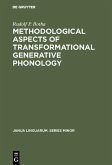This book presents a development of Jean Lowenstamm's idea that phonological constituent structure can be reduced to a strict sequence of non-branching Onsets and non-branching Nuclei. The approach at hand is known as 'CVCV', and emerged from Government Phonology. Since its very beginnings in the early 80s, the central claim of this theory has been that syllable-based generalisations are due to lateral relations among constituents, rather than to the familiar arboreal structure. This book shows that Standard Government Phonology did not go far enough in implementing this idea. CVCV completes the missing steps: structure and causality are fully lateralised. Detailed discussion is offered how basic phonological objects and processes such as Codas, closed syllables, long vowels, geminates, syllabic consonants, vowel-zero alternations, closed syllable shortening, compensatory lengthening, lenition and the like can be represented within the CVCV frame. The first part of the book is called "What is CVCV ?". It presents the properties of the theory. The second part focuses on the reasons why it is worthwhile considering CVCV a valuable and viable approach. The primary goal of the book is not to engage the dialogue with other phonological theories. Rather, it aims at establishing a player in the general game: defining the properties of a theory is always prior to its comparison with other models. In the current OT-dominated phonological scene, then, CVCV appears as a true theory of the 80s insofar as it is representational at core: representations exist and are primitive, rather than arising as accidental results from a heterogeneous set of constraints. The original analyses presented in this book are grounded in the languages that the author is best familiar with, i.e. (Western) Slavic, French, German and some Semitic. Particular attention is paid to diachronic evidence in its relation to the synchronic state of languages.
Dieser Download kann aus rechtlichen Gründen nur mit Rechnungsadresse in A, B, BG, CY, CZ, D, DK, EW, E, FIN, F, GR, HR, H, IRL, I, LT, L, LR, M, NL, PL, P, R, S, SLO, SK ausgeliefert werden.









